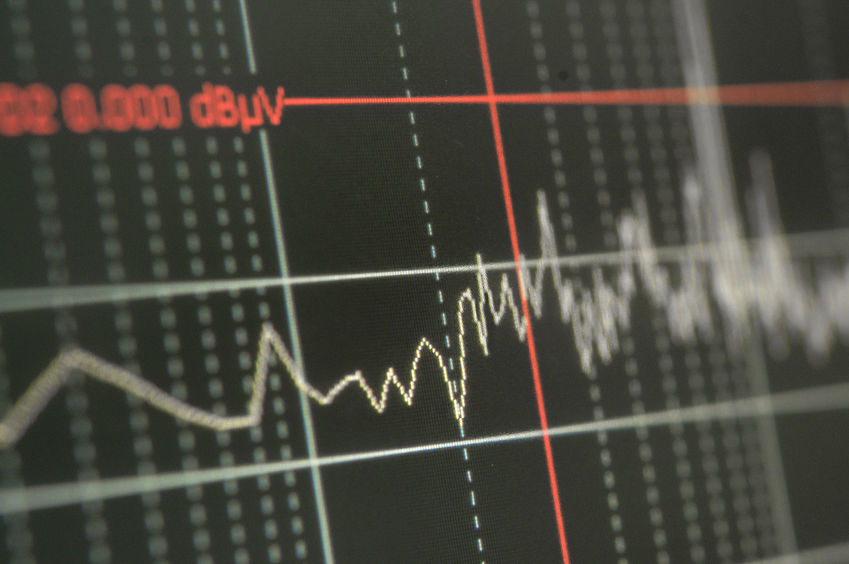Perhaps you’re noticing the letters EMF are appearing more and more in newspaper articles and blogs devoted to healthcare concerns. Don’t be surprised if you see more warnings about EMF as more and more people are won over by the conveniences of modern life made possible by wireless technology. In fact, you may be tempted to equip your home with WiFi, or perhaps you already have, and now there’s a Siri speaker on your kitchen counter and a router in the living room so your kids can play video games on their tablets in their bedroom, your partner can watch football on the Smart TV in the living room, and the TV mounted over the stove can keep you company while you pop dinner into the microwave.
If this describes your household, there’s all the more reason you should know what EMF is, and how EMF exposure can impact your health and that of your family. So let’s address some of the basics of EMF and EMF exposure.
What is EMF?
EMF stands for ElectroMagnetic Field. You may also see references to Electromagnetic Radiation or EMR. But no matter what you call it, Electromagnetic Field refers to energy. Some forms of energy are natural such as energy emanating from the sun in the form of sunlight. Other types are artificial like X-rays and microwaves. Once upon a time, those were the two primary sources of EMF, but as WiFi devices cease to be conveniences and become staples of life, the amount of EMF in the air has multiplied.
In order to gain a more in-depth understanding, we need to look at what electro and magnetic mean.
- Electro
Think electro as in electron. Electrons, along with protons and neutrons make up every atom. And atoms make up all matter. Electrons are negatively charged and revolve around the center of the atom with its positively charged protons and neutrons which have no charge. When an atom loses one or more electrons to another atom, energy is released in the form of electricity. Lightning is a good example, as is the power that flows when you plug an appliance or device into a wall socket. The greater the flow of electrons, the more powerful the invisible field of electromagnetic energy that surrounds the appliance. We measure this force in units called volts.
- Magnetic
Think magnetic as in magnetism. Magnetism, as in the case of two magnets can either attract or repel each other. The place where they act upon each other is called a magnetic field, and when electricity is added to the mix, electromagnetism.
- Electromagnetism and Magnetic Fields
When an electric current flows it creates a magnetic field. Therefore, when electricity flows through a wire, the wire is surrounded by an electromagnetic field. Likewise, anything that sends a wireless signal is surrounded by EMF. As we mentioned above, EMF has always been all around us, in the sun, lightning, rainbows, and since Thomas Edison started the ball rolling with the light bulb, it’s also present in overhead power lines, plugged-in electrical appliances, telephones, electric typewriters, and desktop computers. And more recently devices such as cellphones, tablets, laptop computers, smart gadgets, Bluetooth radios in vehicles, WiFi networks make avoiding EMF all but impossible.
EMF Frequencies and the Electromagnetic Radiation Spectrum
EMF is a form of radiation, a byproduct of energy (in the form of electrons) transmitted from its source to a device that uses it. As a result of this movement, electricity is generated on one direction, and magnetism in the opposite direction.
To understand this, it helps to imagine a grid with the electricity traveling laterally on an x- axis and the energy at a 90-degree angle along a y-axis. And now, if you picture these energy fields moving in waves, you will see something similar to the electromagnetic radiation spectrum with waves of differing heights and lengths representing the frequencies of electromagnetic waves.

The longer a wave is, the lower its frequency, and vice versa, the shorter a wave is, the higher it’s frequency. It’s also important to note when looking at illustrations of the electromagnetic radiation spectrum that the waves of different energy levels are grouped together with all the lower frequency waves at the left, starting with extremely low frequency radiation and proceeding to the higher frequency radiation at the far right. These frequencies are measured in units called Hertz (Hz):
- ELF (Extremely low frequency) ranging from 3 – 30 Hz radiation emitted by household electricity that powers plugged in appliances with frequencies.
- RF (Radio frequency) ranging from 3 kilohertz (kHz) to 300 gigahertz (GHz). These frequency waves have long been used by radio stations, tuning in to their particular frequencies through their antennas and using them to broadcast their programs. And have been joined by all wireless devices from WiFi routers to cellphones, Bluetooth receivers, smart speakers, baby monitors and the like.
- Microwave 300 Megahertz (MHz) to 300 gigahertz (GHz) radiation, for example in microwave ovens that heat food but also used by certain WiFi technologies.
- Infrared 300 GHz to 400 Terahertz (THz) Cannot be seen by the naked eye without night vision goggles.
- Visible Light (400 to 800 THz) light we can see.
- Ultraviolet (3 x 1016Hz to 3×1019 Hz) – found in sunshine, black light lamps, tanning booth, fluorescent lighting.
- X-rays (30 petahertz to 30 exahertz) – diagnostic testing X-rays, mammograms, cat scans, airport screening devices.
- Gamma Rays (greater than 3×1019 Hz) – these, are the most powerful of EMFs, and have the smallest wavelengths and are produced by the most energetic and hottest matter in the universe such as neutron stars, pulsars, regions surrounding black holes, and supernova explosions.
When it comes to determining the amount of EMF radiation, a device emits, it depends on its frequency. The taller the wave, the higher the energy. Higher energy waves are on the right side of the EMF spectrum. The smaller waves are lower energy and are on the left side.
Additionally, the lower energy waves have lower energy peaks and are spread out. The higher energy waves have taller peaks with less distance between them.
How EMF Exposure Impacts Humans
The Electromagnetic radiation Spectrum can be divided into two sections – non-ionizing radiation and ionizing radiation. If you refer to the order of frequencies, the radiation emitted by everything to the left of, and including visible light, (ELF, RF, microwave and infrared) all have lower waves and lower energy and are considered non-ionizing radiation. Everything to the right of visible light, the higher energy taller wave ultraviolet, x-rays, and gamma rays, emit ionizing radiation.
Since personal devices such as cellphones, laptops, Bluetooth ear buds, and even microwave ovens emit low energy non-ionizing radiation, using them is not as harmful to health as being exposed to higher energy ionizing radiation. This is not to say there are no consequences to exposure to non-ionizing radiation.
Many users of WiFi-enabled technology who have been doing so for a number of years report adverse effects ranging from allergies, asthma, and anxiety to high blood pressure, heart problems, hormone imbalances, headaches, migraines, and hearing problems, to name but a few. Over 900 scientific papers have been published on conducted studies to establish a link between these maladies, and other health risks like cancer, and low-energy non-ionizing radiation. And so, because these devices are so useful and convenient in today’s fast-paced lifestyles, most people, even those experiencing health problems, continue using them, either unaware of the possible connection, or dismissing them as relatively minor.
The same cannot be said of high-energy ionizing radiation which has been shown to be potent enough to split chemical bonds. By removing electrons from atoms and molecules. This process is called ionization, and when humans and animals are exposed to the high energy of x-rays, ultraviolet and gamma rays, their DNA and cells suffer damage although the deadly consequences take years to become apparent. One has only to consider all the Japanese survivors who weren’t in the immediate vicinity of the atomic bombs that struck Hiroshima and Nagasaki, yet years later suffered its effects such as genetic damage visited on their children, to see proof of the lasting effects of ionizing radiation. This is why X-ray and dental technicians are required to wear lead aprons when taking X-rays and administering MRIs and CAT scans. It is also why those who are concerned are amazed and frustrated by the lack of a central authority over EMF usage here in the United States.
Who Regulates the Standards for EMF Safety
The direct answer to this question is “it depends.” Although there are no federal standards regarding limitations on electromagnetic magnetic fields and the resulting EMF exposure, several agencies within the federal government set standards for them, but which one is in charge depends on the type of device, specific frequency of the EMF it emits, and the type of radiation. As things exist today, the following agencies serve as overseers of their own particular domains:
U.S. Food and Drug Administration (FDA) –
- electronic devices that emit non-ionizing or ionizing radiation
- the regulation of and safe use of devices used in medical diagnostics such as X-ray machines and MRI and C-T scanners.
U.S. Nuclear Regulatory Commission (NRC) –
- the manufacture and subsequent use of radioactive material that are used in medical research, radiation therapy, and nuclear medicine;
- nuclear power plants;
Federal Communications Commission (FCC) –
- cellphones
- cell towers
- smart meters
Environmental Protection Agency (EPA)
- places limitations on the public’s exposure to radiation exposure in uranium fuel facilities
One Last Word
Until this patchwork of safeguards can be replaced by one regulating agency those who are worried about exposure to EMF of any kind would be wise to exercise caution by limiting their use of wireless technology, and unplugging all devices they do use, either as soon as they are through with them, or doing so each night.




